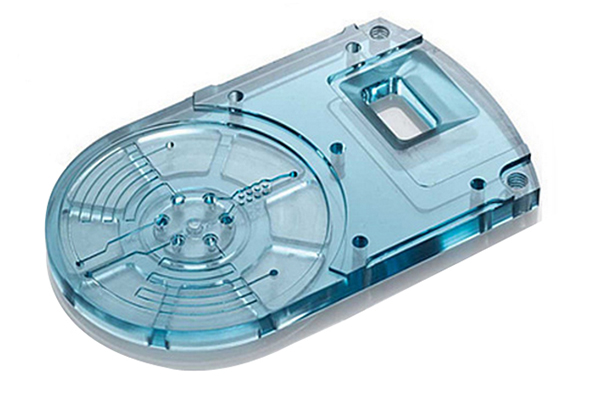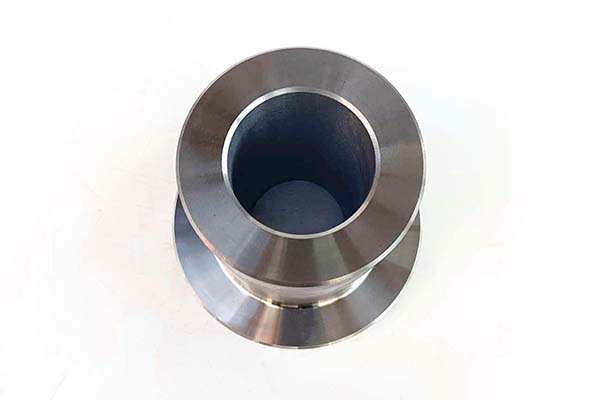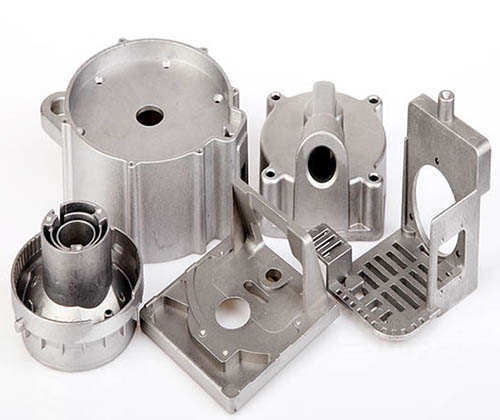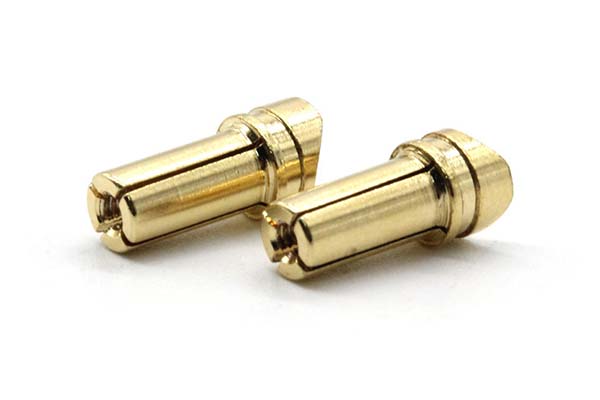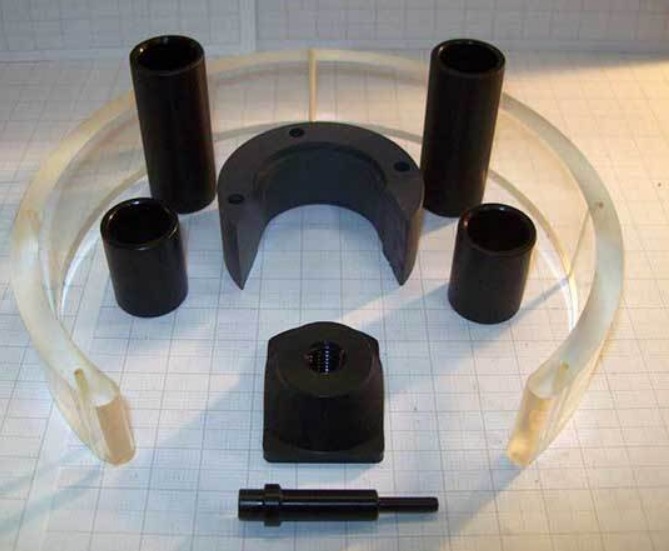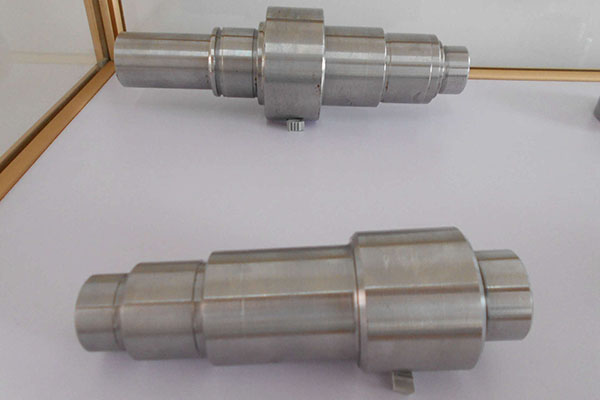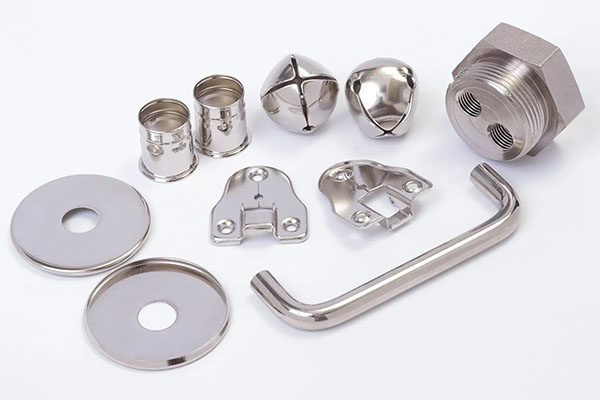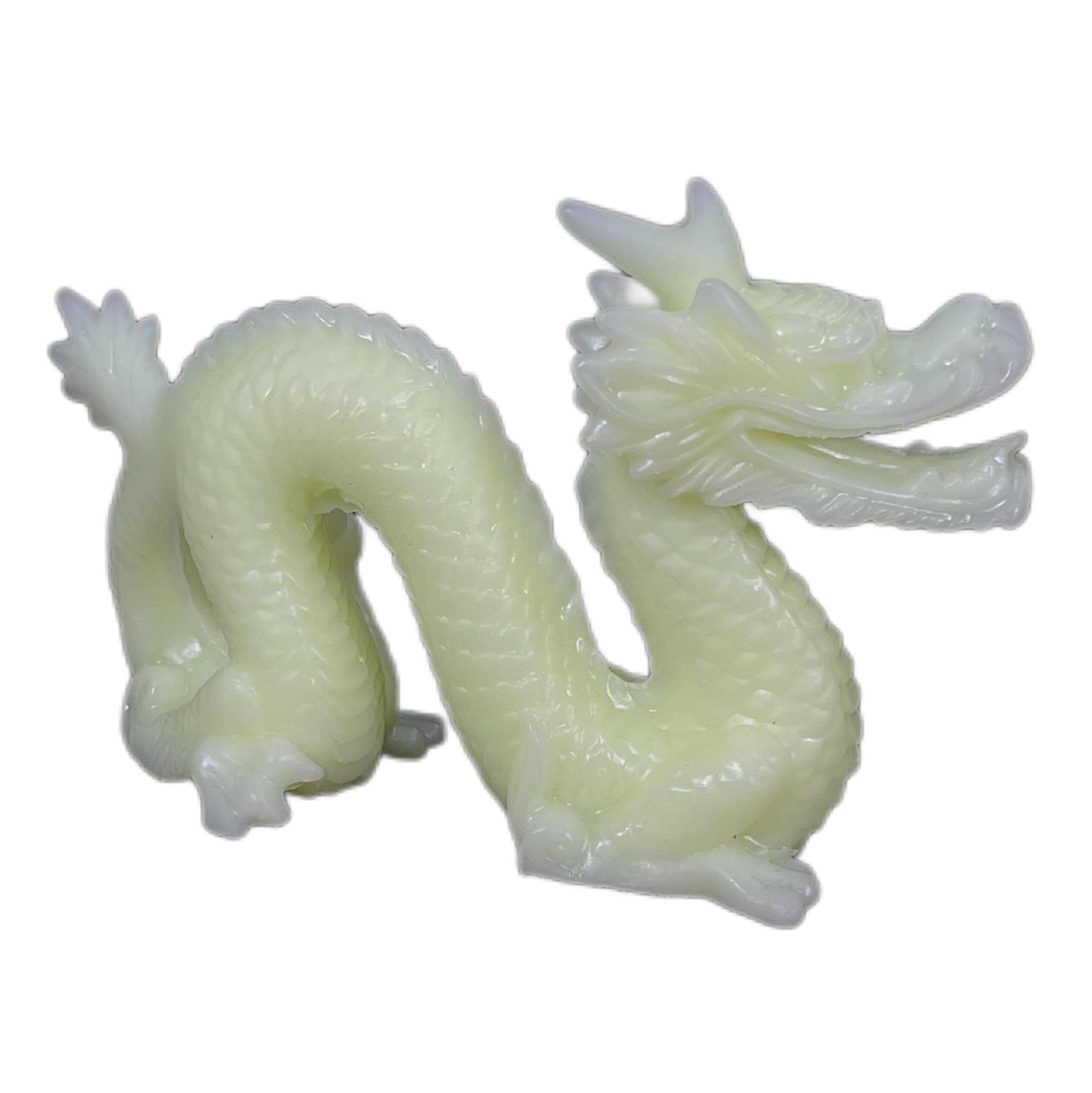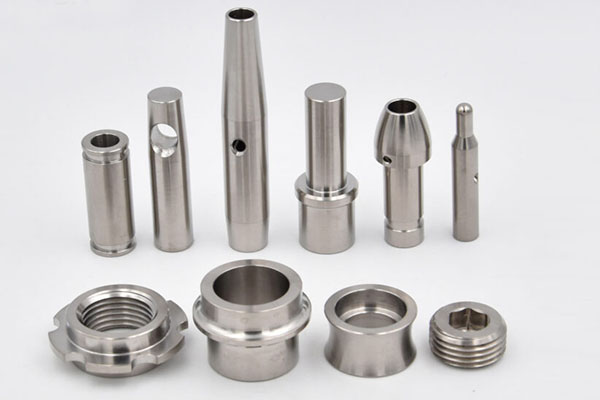1. Introduction to SLA Rapid Prototyping
In the fast - paced and highly competitive realm of product development, the ability to quickly transform abstract design concepts into tangible, physical models is no longer a luxury but a necessity. This is where rapid prototyping steps in as a game - changing technology. Among the various rapid prototyping techniques available today, Stereolithography (SLA) has emerged as a frontrunner, revolutionizing the way products are designed, tested, and refined.
SLA rapid prototyping is a form of additive manufacturing. Its fundamental principle is based on the photopolymerization of liquid resins. When a high - precision laser beam, typically an ultraviolet (UV) laser, scans across a vat of photosensitive resin, it cures the resin layer by layer. Each layer corresponds to a cross - section of the 3D model that has been sliced in a computer - aided design (CAD) software. As the laser traces the shape of the layer, the resin in that area solidifies, adhering to the previously cured layer. Once one layer is complete, the build platform lowers by a fraction of a millimeter, and a new layer of resin is spread across the surface, ready for the laser to create the next cross - section. This process repeats until the entire 3D object is built, layer upon painstaking layer.
For example, imagine designing a new medical implant. Using SLA, the intricate and precise shape of the implant, which might need to fit perfectly within the human body, can be accurately replicated. The CAD model of the implant is sliced into hundreds or even thousands of layers. The SLA machine then uses the laser to solidify the resin in each layer, gradually building up the complex three - dimensional structure of the implant.
In the following sections, Yigu Technology will delve deeper into the key advantages that SLA rapid prototyping services offer, exploring how it can significantly enhance the product development process in various industries, from the highly regulated medical field to the cutting - edge aerospace sector.
2. Unmatched Precision and Detail Resolution
2.1. Layered Accuracy for Complex Geometries
SLA technology excels in achieving micron - level precision, making it ideal for prototypes requiring intricate details or tight tolerances. The process involves curing liquid resin layer by layer using a UV laser, with each layer thickness typically ranging from 25 - 100 microns—significantly finer than most other 3D printing methods. For Yigu Technology example, in the production of jewelry prototypes, where every curve and detail is crucial, SLA can accurately reproduce even the most delicate filigree patterns. A ring design with intricate floral motifs was prototyped using SLA. The CAD model was sliced into layers with a thickness of 50 microns. The resulting prototype had sharp edges and smooth curves, accurately representing the original design. This level of precision is far beyond what can be achieved with traditional manufacturing methods such as casting for small - scale jewelry production.
Another example comes from the aerospace industry. A component of a satellite communication system was designed with complex internal channels for cooling. Using SLA, the manufacturer was able to create a prototype with a layer thickness of 30 microns. The internal channels had a tolerance of ±0.05mm, ensuring efficient heat dissipation. This precision was essential for the proper functioning of the satellite in the harsh environment of space, where even minor flaws could lead to system failures.
In contrast, Fused Deposition Modeling (FDM), another popular 3D printing technology, typically has a layer thickness in the range of 100 - 400 microns. This difference in layer thickness means that FDM may struggle to produce parts with the same level of detail and accuracy as SLA, especially for complex geometries. The following Yigu Technology table summarizes the layer thickness and typical tolerance ranges of SLA and FDM:
| 3D Printing Technology | Layer Thickness Range | Typical Tolerance |
| SLA | 25 - 100 microns | ±0.05 - 0.1mm |
| FDM | 100 - 400 microns | ±0.2 - 0.5mm |
2.2. Capturing Microfeatures and Smooth Surfaces
Unlike subtractive manufacturing or fused deposition modeling (FDM), SLA eliminates stair - stepping artifacts on curved surfaces, delivering a smooth finish that closely mimics the surface quality of injection - molded parts. This is particularly advantageous for consumer products like smartphone casings or automotive interior components, where aesthetics and ergonomics are paramount.
A leading consumer electronics company was developing a new smartphone with a unique, ergonomic design. The back cover of the phone had a complex, curved shape with fine texture details for a better grip. When they used SLA to create prototypes, they were able to accurately replicate the curved surface and the anti - slip texture. The surface finish was so smooth that it felt just like the final product. In comparison, when they tried FDM for prototyping, the stair - stepping effect on the curved surface was clearly visible, and the texture details were not as sharp.
A case study by a leading automotive brand showed that SLA prototypes reduced design iteration time by 40% compared to CNC - machined models. The SLA technology seamlessly replicated intricate textures (e.g., leather - like patterns on dashboard components) and ultra - thin walls (down to 0.3mm) without secondary finishing. For instance, a new dashboard design with a soft - touch, leather - textured surface was prototyped using SLA. The texture was reproduced with such fidelity that it was indistinguishable from real leather in terms of appearance and feel. This allowed the design team to quickly evaluate the aesthetic and tactile aspects of the design, reducing the need for time - consuming and costly design revisions.
3. Material Versatility for Functional Prototyping
3.1. Diverse Resin Systems for Specific Applications
SLA rapid prototyping stands out for its remarkable material versatility, offering a broad spectrum of Photosensitive resin materials, each tailored to meet specific application requirements. This diversity allows engineers and designers to choose the most suitable resin for their prototypes, ensuring optimal performance and functionality.
One of the key advantages of SLA is the availability of resins with distinct mechanical, thermal, and chemical properties. For Yigu Technology example, ABS - like resins, such as DSM Somos 11120, are engineered to mimic the impact - resistance properties of traditional ABS plastics. With a tensile strength reaching up to 35 MPa, these resins are ideal for functional testing of mechanical parts. In the automotive industry, components like door handles or interior trim pieces can be prototyped using ABS - like resins. The high impact resistance ensures that the prototypes can withstand the stresses and strains they would encounter in real - world use, providing valuable insights into the design's durability before mass production.
High - temperature resins, such as Somos 12120, are specifically formulated to endure elevated temperatures. After post - curing, they can withstand up to 126°C. This makes them an excellent choice for applications in the aerospace and automotive industries, where components are often subjected to thermal stress. In aerospace, parts like engine components or heat - shield prototypes can be fabricated using high - temperature SLA resins. These prototypes can then be tested under extreme thermal conditions to ensure they can maintain their structural integrity in the harsh environment of space or the high - temperature engine compartments of aircraft.
Optically clear resins are another important category in SLA prototyping. These resins enable the creation of prototypes for lenses, optical devices, or medical products that require biocompatibility. For instance, in the medical field, prototypes of contact lenses or medical devices that come into direct contact with bodily fluids can be made using optically clear resins that meet USP Class VI standards. These standards ensure that the material is safe for use in medical applications, as it has been tested for cytotoxicity, sensitization, and systemic toxicity. The optical clarity of the resin allows for accurate testing of the device's optical properties, such as light transmission and refraction, while the biocompatibility ensures its suitability for medical use.
The following Yigu Technology table provides a summary of some common SLA resin types and their key properties:
| Resin Type | Key Property | Typical Application | Tensile Strength (MPa) | Temperature Resistance |
| ABS - like | Impact resistance | Mechanical parts, automotive components | 30 - 40 | Up to 80°C |
| High - temperature | Heat resistance | Aerospace, automotive engine parts | 40 - 60 | Up to 150°C (post - cured) |
| Optically clear (biocompatible) | Transparency, biocompatibility | Medical devices, lenses | 25 - 35 | Up to 60°C |
3.2. Bridge to Final - Material Performance
A significant advantage of SLA prototyping is that the resins used closely mimic the mechanical and thermal properties of end - use plastics. This makes SLA prototypes highly representative of the final product, allowing for more accurate testing and validation during the design phase.
Consider an automotive original equipment manufacturer (OEM) that is developing a new plastic component for a vehicle. By using a polypropylene - like resin in SLA prototyping, they can create a prototype that closely resembles the final injection - molded part in terms of mechanical properties. A study by this OEM found that when comparing SLA prototypes made with polypropylene - like resin to injection - molded parts, the variance in flexural modulus was less than 5%, and the elongation at break also showed minimal differences. This similarity in properties means that engineers can conduct meaningful tests on the SLA prototypes, such as load - bearing tests or chemical resistance tests, early in the design cycle.
This ability to test with representative materials reduces the need for costly and time - consuming tooling in the initial testing phases. Instead of creating expensive injection - molding tools just for testing, engineers can use SLA prototyping to quickly iterate on the design. They can make design changes, create new prototypes, and test them for functionality and performance. Once the design is optimized, the final tooling can be created for mass production. This approach not only saves time and money but also reduces the risk of costly design flaws being discovered late in the production process.
In the electronics industry, when developing a new enclosure for a device, SLA prototyping with a resin that mimics the properties of the final plastic material can be used to test the enclosure's ability to protect the internal components from environmental factors, such as moisture or impact. The SLA prototype can be subjected to various tests, such as drop tests or humidity tests, to ensure that the design will meet the required standards for the final product.
4. Speed and Efficiency in Iterative Design
4.1. Rapid Turnaround for Agile Development
In the dynamic landscape of product development, time is of the essence. SLA rapid prototyping services shine brightly when it comes to providing a rapid turnaround, making them an invaluable asset for agile development methodologies.
SLA’s additive process eliminates the need for custom fixtures or multi-step machining, drastically reducing lead times. A typical SLA prototype measuring 100mm in height can be printed in just 4 - 6 hours, including post - curing—70% faster than CNC machining for the same geometry. This speed is transformative for startups or SMEs: a wearable tech company used SLA to produce 12 design iterations of a smartwatch casing in under a week, compared to 3 weeks with traditional methods, accelerating their time - to - market by 40%.
This ability to quickly produce multiple design iterations allows companies to respond rapidly to market feedback, technological advancements, or changes in customer requirements. For example, in the consumer electronics industry, where product lifecycles are becoming increasingly short, SLA enables manufacturers to swiftly adapt their product designs. A smartphone manufacturer might use SLA to create new prototypes of a phone's housing with different ergonomic designs or material finishes in a matter of days. They can then test these prototypes with focus groups or conduct drop - tests to evaluate the design's durability and user - friendliness. Based on the feedback, they can make further design modifications and create new SLA prototypes, all within a short time frame. This iterative process helps them to develop a more market - ready product in less time, giving them a competitive edge over their rivals who may be using slower prototyping methods.
4.2. Automated Workflow Integration
Modern SLA services have evolved to integrate seamlessly with CAD software and automated support structures, streamlining the prototyping pipeline. This integration is a game - changer in terms of efficiency and productivity.
Advanced systems like 3D Systems’ ProX 800 automatically generate optimized support grids for overhangs, reducing manual intervention by 80%. This not only saves time but also minimizes the risk of human - error during the support - structure design process. For instance, when creating a complex SLA prototype with multiple overhangs and intricate internal structures, the software can analyze the 3D model and generate a support structure that is both robust enough to hold the part during printing and easy to remove after the print is complete.
Additionally, batch processing capabilities allow multiple small parts to be printed simultaneously on a single build platform, lowering per - unit costs by up to 30% for low - volume orders. A jewelry manufacturer, for Yigu Technology example, can print a batch of 50 small pendant designs on a single SLA build platform. This not only reduces the overall production time but also means that the cost per pendant in terms of resin usage, machine time, and labor is significantly lower compared to printing each pendant individually.
The integration of SLA with CAD software also enables a more efficient design - to - prototype workflow. Designers can make changes to the CAD model and immediately send the updated file to the SLA printer. The printer can then start the printing process without the need for extensive manual data transfer or file - format conversions. This seamless integration reduces the time between design iterations and allows for a more fluid and collaborative design process. In a team environment, designers, engineers, and product managers can work together more effectively, as the quick turnaround time for prototypes enables them to test and validate ideas in real - time.
5. Cost-Effectiveness Across Project Scales
5.1. Economical for Low-Volume Production
When it comes to cost - effectiveness, SLA rapid prototyping offers distinct advantages, especially in low - volume production scenarios. While the initial investment in SLA machines can be high, service providers have found ways to make it an affordable option for small - batch production.
SLA service providers often operate multiple SLA machines in a shared facility. This shared infrastructure allows them to spread out the fixed costs, such as equipment purchase, maintenance, and facility rent, across multiple projects. As a result, they can offer competitive pricing for small - scale production runs. For example, a startup that needs to produce 20 prototypes of a new product can turn to an SLA service provider. The service provider can fit these 20 parts onto a single build platform, along with parts from other projects, making efficient use of the machine's capacity.
A comparative analysis with other manufacturing methods, such as CNC machining and FDM, further highlights SLA's cost - effectiveness for low - volume production. Consider the following Yigu Technology table:
| Parameter | SLA (1–50 units) | CNC Machining (1–50 units) | FDM (1–50 units) |
| Average Cost per Part | \(50–\)150 | \(200–\)500 | \(30–\)100 |
| Lead Time | 1–3 days | 5–10 days | 2–5 days |
| Surface Finish (Ra) | 0.8–1.6μm | 1.6–3.2μm | 3.2–6.3μm |
From the table, we can see that for small - batch production of 1 - 50 units, the average cost per part for SLA is relatively low compared to CNC machining. CNC machining involves high setup costs, including programming the machine, creating custom fixtures, and selecting the appropriate cutting tools. These costs are spread over a small number of parts in low - volume production, resulting in a high per - part cost. FDM, on the other hand, has a lower per - part cost than CNC machining but often produces parts with a rougher surface finish, which may require additional post - processing, adding to the overall cost.
5.2. Reduced Waste and Tooling Costs
Another aspect of SLA's cost - effectiveness lies in its ability to minimize material waste and eliminate the need for costly tooling in many cases.
SLA is an additive manufacturing process, which means it builds parts layer by layer by solidifying only the necessary resin. As a result, the amount of wasted material is significantly reduced. Typically, only 5 - 10% of the resin used in an SLA process goes unused. This is in stark contrast to subtractive manufacturing methods, such as CNC machining, where 30 - 50% of the raw material may be removed as waste. For example, when creating a complex part with internal cavities and intricate geometries using CNC machining, a large amount of material needs to be cut away to achieve the desired shape. In SLA, the part is built precisely, with resin only added where it is needed, reducing waste and the associated material costs.
Tooling costs can be a major expense in traditional manufacturing, especially for complex designs. In CNC machining, complex parts may require multiple tool changes, and each tool change may involve the use of custom - made cutters. The cost of these custom cutters can range from \(500 - \)2,000. SLA, however, does not rely on physical cutting tools. Once the digital model is prepared, the SLA machine can directly build the part without the need for custom tooling. This makes SLA an extremely cost - effective option for one - off prototypes or low - risk design experiments. A product design company that wants to test a new concept can use SLA to quickly create a prototype without having to invest in expensive tooling. If the design needs to be modified, a new prototype can be printed with minimal additional cost, simply by making changes to the digital model.
6. Conclusion: The Strategic Edge of SLA Prototyping
SLA rapid prototyping services offer a unique blend of precision, material versatility, and speed, making them indispensable for modern product development. By addressing the critical needs of design validation, functional testing, and cost - effective iteration, SLA empowers engineers to bridge the gap between concept and reality with unmatched efficiency. As industries demand ever more innovative and complex solutions, mastering SLA technology becomes not just an advantage but a necessity for staying competitive.
In Yigu Technology summary, SLA's micron - level precision allows for the creation of parts with intricate details and tight tolerances, setting it apart from other 3D printing methods. Its material versatility, with a wide range of resins available for different applications, ensures that prototypes can closely mimic the properties of the final product. The speed of SLA, enabling rapid turnaround times and seamless integration with CAD software, is a game - changer for agile development. Cost - effectiveness, both in low - volume production and through reduced waste and tooling costs, makes SLA an attractive option for businesses of all sizes.
As technology continues to advance, SLA rapid prototyping will only become more refined and accessible. It will continue to drive innovation across industries, from healthcare to transportation, and enable the development of products that were once thought to be impossible.
FAQ
Q1: What is the typical cost range for SLA rapid prototyping services?
A1: The cost of SLA rapid prototyping services can vary based on factors like part size, complexity, and material used. For small, simple parts, it might start from around \(50, while larger, more complex ones can cost upwards of \)500. Low - volume production runs of 1 - 50 units may have an average cost per part in the range of \(50 - \)150.
Q2: How accurate are SLA - printed prototypes?
A2: SLA - printed prototypes are highly accurate, with a layer thickness typically ranging from 25 - 100 microns and a typical tolerance of ±0.05 - 0.1mm. This allows for the reproduction of complex geometries with sharp edges and smooth surfaces, making them suitable for applications where precision is crucial.
Q3: Can SLA be used for mass production?
A3: While SLA is more cost - effective for low - volume production, it can be used for small - scale mass production in some cases. Service providers can optimize build platforms to print multiple parts simultaneously, reducing per - unit costs. However, for high - volume mass production, injection molding or other high - volume manufacturing methods may be more suitable in terms of cost and production speed.
